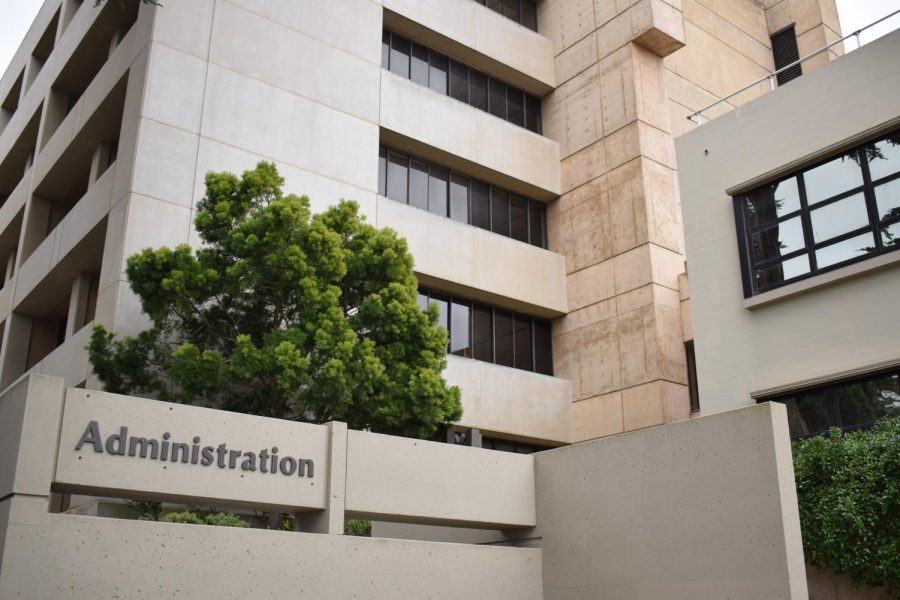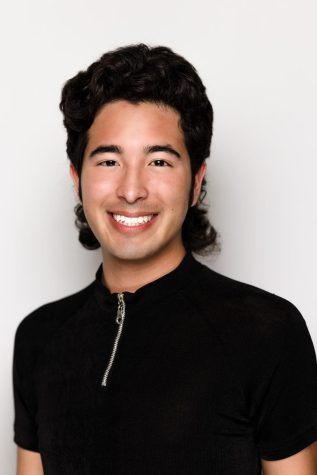In an email to SF State’s faculty on Tuesday, President Lynn Mahoney urged instructors to transition their remote classes to face-to-face courses for the Fall 2021 semester.
The message comes as the city of San Francisco entered the yellow tier of COVID-19 restrictions on Wednesday. With pandemic-set restrictions beginning to ease in the county, the San Francisco Department of Public Health can open up the number of in-person courses.
The email is not contractually binding for faculty to follow — in fact, requiring it would violate union contracts — but rather an encouragement to get students back in classrooms.
“As the health news improves rapidly, students are increasingly imploring us for in-person instruction, including hybrid courses. For a good number, waiting until January 2022 is just too long to be away from campus and in-person instruction,” Mahoney wrote.
According to SFDPH data, 73% of San Franciscans have received at least one dose of a COVID-19 vaccine. In April, Mayor London Breed said that San Francisco was on track to having 80% of its residents at least half-vaccinated, offering signs of a herd immunity of sorts.
Mahoney emphasized her goal to make in-person classes available for all students next semester. Currently, face-to-face instruction makes up less than 30% of the total courses available for the fall. The complete fall course list will be available to the campus on May 10, but that list is subject to change up until May 24, when students can begin registering for courses.
“When you combine the health news with students increasingly —pretty much begging — us to open the campus, we need to push a little harder on fall and have more faculty teach,” Mahoney said in an interview with Xpress.
But in a survey administered by former Student Life and Dean of Students Associate Vice President Danny Glassman in February, 27% of students surveyed said they wanted in-person instruction, while 52% said they wanted fully online courses. Though the survey represents less than 10% of the Spring 2021 student body, administrators said the turnout was higher than anticipated given their limited access to students.
That’s not to say student perspectives haven’t changed. Mahoney regularly meets with students to get their thoughts on reopening. Members of the Associated Students Board of Directors, such as President Andrew Carillo, are working toward reopening the campus for the fall.
While students may be telling Mahoney that they’d appreciate a larger return to in-person courses, some faculty members have reservations. James Martel, SF State’s California Faculty Association chapter president, described there being “so much anxiety” among union members, despite their desire to return to the classroom.
Responding to the email sent out to faculty, cinema professor Joseph McBride wrote an email in protest of Mahoney’s request.
“I will not be going back to campus this fall to teach in person for health and safety reasons, my own and those of the students and staff,” McBride wrote to Mahoney. “To go back to teaching in person precipitously this fall would be foolish, reckless, and dangerous. It exposes our faculty, staff, and students to potentially fatal illness. Safety should be our paramount concern.”
The cinema professor, 73, raised concerns that younger people are more at risk of catching the virus and transmitting it. According to data from the Centers for Disease Control, people in the 20-29 age range accounted for over 20% of all confirmed cases in the nation last summer.
McBride said that signs of a national slowing down of vaccination rates is also reason to raise concerns, but admitted that he didn’t see this being a problem for SF State. An issue he had with the email, he said, was that it appeared to him to be pressuring the faculty to make the transition to in-person classes.
Martha Gorzycki, CFA representative for the cinema department, said the union supports faculty’s right to teach their classes in ways they deem fit.
“With the added flux of ever-changing health guidelines, asking faculty to change teaching modalities at a moment’s notice is very stressful and an enormous amount of extra unpaid labor,” Gorzycki said in a statement to Xpress.
Gorzycki also recognizes the potential inequities that continuous remote instruction could bring to students without at-home resources.
“The current limited enrollment caps proposed for face-to-face fall classes will create inequity for students in certain programs,” Gorzycki said. “Faculty are strongly committed to student equity and access to all necessary facilities for all students in all programs at SFSU.”
Martel said that the rush to move in-person isn’t necessarily a bad thing. He said the push is in part due to San Francisco’s handling of the pandemic, which has given the university flexibility in its in-person course offerings.
He said that the university opted for a hyper-cautious handling of the pandemic — in contrast, campuses in the California State University such as San Diego State University are preparing to offer a primarily in-person semester this fall.
Martel also attributes this rush to an effort to bolster enrollment, an issue unique to few CSUs amid increasing enrollment at others. Mahoney also acknowledged this, hoping that the freshmen enrollment rate — which dropped by 24.77% from Fall 2019 — will make a recovery once the university can provide an on-campus experience.
“[Administration is] always kind of concerned about minimizing that and sort of being where the students want to be,” Martel said. “The issue is that this is a very fast moving, constantly changing target.”
Martel described Mahoney’s outreach more so as a sign of desperation in the guise of “moral pressure” than an act of force. He thinks that faculty has implicitly beared the brunt of enrollment throughout the pandemic. He attributes enrollment reasons, in part, to larger issues the city faces, such as the cost of living.
Both Mahoney and Martel agree, however, that the best course of action is working to ensure safety by getting as many students vaccinated in preparation for the fall semester as possible.
“We’re working really hard to balance compassion with our faculty and staff, with students. But at the end of the day, our students come first,” Mahoney told Xpress. “So we’re not going to force anyone back in the fall at any faculty member back. But we’re going to work as hard as we can to bring back as many and have as many seats for you as we can.”














